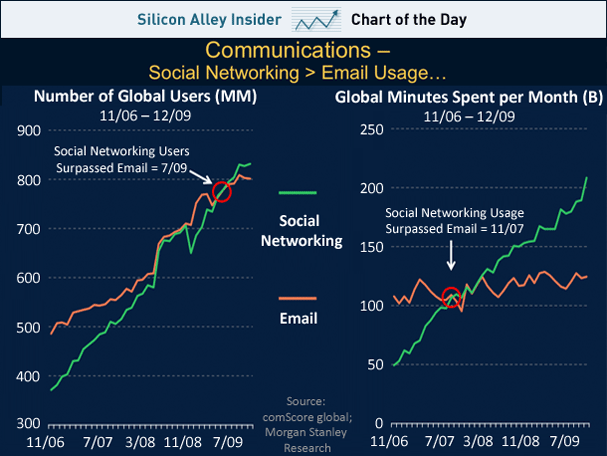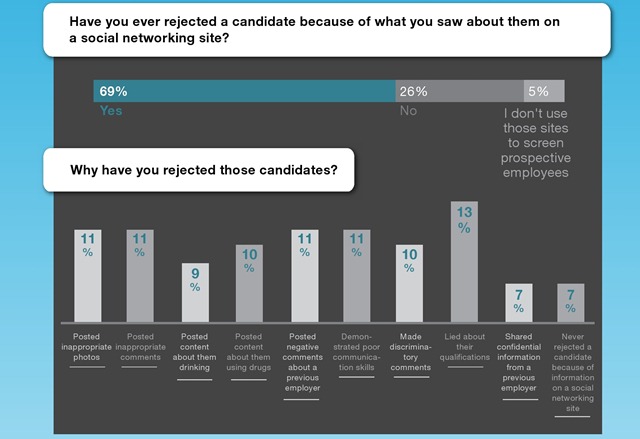Balancing an Employees’ Freedom with Brand Image Control in the Social Media Landscape
An American National Labour Relations Board ruling in January allowed a group of employees terminated for an online discussion about their employer to file suit for wrongful dismissal. Five people were fired for criticizing, on a public Facebook thread, the employer’s apparent inequitable distribution of the workload.
This ruling set a precedent in labour regulations that social media forums are entitled to the same protections as any public space where employees can freely express their concerns about their work environment without fear of censorship or retribution.
This case outlines a conflict that many firms struggle with. How can one manage their employee’s impact on the firm’s the brand image without infringing on the fundamental freedoms of expression and association?
The below graph, sourced from BusinessInsider.com , can suggest that as social media forums become an increasingly important means of workplace communication and in 2011, it surpassed e-mail as the most used (by time) method of global communication in study conducted by Morgan Stanley.
The dated Command and Control strategies that many firms employ to protect the public-facing trademarks and brand image cannot simply be extrapolated to cover employees’ public communications about the firm. There is no widely accepted model of how to balance employee freedoms and the firm’s need for brand value protection in the social media landscape.
Some firms have tried to get ahead of this potential public-relations grenade by mandating company-wide social media training. The idea of training is great. It shows that this is something important and should be taken seriously. This then begs a bigger question- what do you teach?
Jeanne Meister of Future Workplace, an executive development firm, proposes that best way to prevent a social media disaster is to encourage employees to participate in an active, identifiable (ie non-anonymous) and responsible social media behaviour. The main point of her training program is to encourage the employees to consider the long-term consequences of posting negative or harmful messages before they post. Specifically, what would be the impact of posting these messages in the personal and future professional relationships? What would it look like to a perspective employer if a candidate repeatedly airs their laundry in a public forum?
There is significant evidence that firm’s do consider social media posting in recruiting processes: (courtesy of Business2Community.com)
By raising an employee’s awareness of the impact of social media participation on their own personal brand, a level of decorum can be expected where personal concerns about the employer are more likely to be expressed, and possibly addressed, in a productive and respectful way. To encourage this mutual respect, Ms. Meister proposes that firms do not simply impose a strict set of rules but rather encourage employees to enter this discussion with a strategy of how to elevate the level of decorum. A great starting point would be what she calls, “The 5 R’s of Social Media”:
- Reason. Simply put: use reasonable etiquette, the same as you would offline.
- Represent yourself. Anonymous profiles lend themselves to more negative content.
- Responsibility. Make sure that what you’re saying is factually correct, and also that it doesn’t violate any legal guidelines that prohibit revealing information that is material to a company’s stock price.
- Respect. What you say online is a permanent record, so don’t say anything online you wouldn’t feel comfortable saying to the whole office – with a camera rolling.
- Restraint. Before you hit that send button, pause and reread. If you wouldn’t want that particular thought or contribution forever associated with your name, don’t post it.


